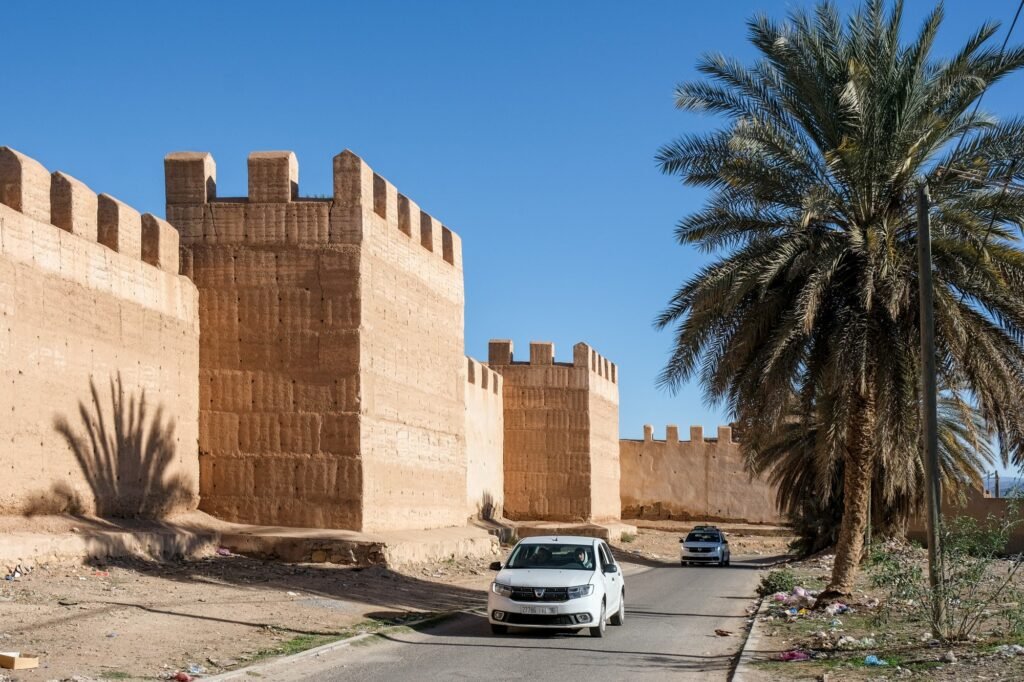
Imagine walking through a city where centuries-old kasbahs stand proudly against a backdrop of rolling desert dunes, where the scent of spicy tagine mingles with the cool breeze from the Atlantic, and where vibrant markets burst with color and life. Welcome to Southern Morocco—a region teeming with history, culture, and untapped tourism potential. Over the past decade, southern Moroccan cities like Marrakech, Ouarzazate, Agadir, and the lesser-known gems such as Tafraoute and Taroudant have undergone a remarkable transformation, positioning themselves as key players on the global tourism map.
But what’s driving this expansion? How are these cities balancing tourism growth with cultural preservation? And what does the future hold for travelers eager to explore Morocco’s southern treasures? In this comprehensive exploration, we’ll delve into the multifaceted process of tourism expansion in Southern Moroccan cities—its motivations, challenges, strategies, and the profound impact on local communities and economies.
The Historical Context: Why the South Matters
Morocco’s southern regions have long held a special place in the country’s cultural and geographical identity. Historically, cities like Marrakech and Essaouira served as vital trading hubs, connecting Africa, Europe, and the Middle East through trade routes that date back centuries. The Atlas Mountains and the Sahara Desert have historically served as natural borders, fostering unique cultures and traditions that continue to attract curious travelers today.
In recent decades, however, the focus of tourism development was predominantly on the northern coastlines and major cities like Casablanca and Rabat. The south, with its rugged landscapes and Berber traditions, remained somewhat under the radar—until government and private sector investments began to shift gears, recognizing the immense potential of this region.
Why Is Tourism Expansion in Southern Morocco Gaining Momentum?
Several interconnected factors fuel the surge in tourism development across Southern Moroccan cities:
- Rich Cultural Heritage and Authenticity
The South offers an authentic Moroccan experience—Berber villages, ancient kasbahs, traditional music, and crafts—that appeals to travelers seeking genuine cultural immersion. As the global traveler trend shifts towards experiential tourism, southern cities are positioning themselves as must-visit destinations. - Natural Landscapes and Adventure Tourism
From the sweeping dunes of the Sahara to the rugged Anti-Atlas Mountains, the region provides a playground for adventure tourism—camel trekking, hiking, rock climbing, and desert safaris. These activities attract adventure seekers and eco-tourists alike. - Government Initiatives and Strategic Investments
Recognizing the economic potential, the Moroccan government has launched initiatives like the “Plan Maroc Vert” and the “Vision 2020” tourism strategy, emphasizing sustainable development and regional diversification. Projects such as the Ouarzazate Film Studios and Agadir’s beachfront resorts exemplify this focus. - Infrastructure Improvements
Upgrades to roads, airports (notably the expansion of Ouarzazate and Agadir airports), and hospitality facilities have made access easier—crucial for attracting international visitors. - Global Trends and Market Diversification
Increasing numbers of tourists from Europe, North America, and emerging Asian markets are seeking off-the-beaten-path destinations, and southern Morocco offers an attractive alternative to crowded tourist spots.
Key Cities Leading the Tourism Expansion
Marrakech: The Gateway to the South
While Marrakech is often considered the gateway to southern Morocco, its ongoing development has set the stage for more extensive regional tourism. The city itself continues to evolve with luxury riads, boutique hotels, and vibrant souks. However, the focus has shifted towards promoting nearby regions like the High Atlas and the Sahara.
Ouarzazate: Hollywood of the Desert
Known as the “Gateway to the Sahara,” Ouarzazate has become a hub for film productions—earning the nickname “Hollywood of Africa.” The city’s Atlas Studios attract filmmakers worldwide, which in turn boosts tourism. The region’s kasbahs and nearby Aït Benhaddou—a UNESCO World Heritage Site—are magnets for history buffs and photographers.
Agadir: Sun, Sand, and Investment
Famous for its beaches and resorts, Agadir has experienced extensive infrastructure upgrades, including new hotels, golf courses, and a modernized port. The recent focus is on sustainable tourism that balances leisure with environmental conservation.
Lesser-Known Gems: Tafraoute and Taroudant
Tafraoute’s surreal rock formations and Berber villages offer authentic cultural experiences and eco-tourism opportunities. Taroudant, often called “Little Marrakech,” boasts ancient walls, bustling markets, and scenic mountain views, making it an appealing alternative for travelers seeking tranquility and tradition.
Strategies Driving Tourism Expansion
1. Leveraging Cultural and Heritage Assets
Preserving and promoting historical sites like Aït Benhaddou, Tiznit’s silver markets, and traditional Berber villages are central to tourism strategies. UNESCO designation, like that of Aït Benhaddou, enhances international visibility and conservation efforts.
2. Developing Niche Tourism Markets
The region is increasingly embracing niche markets such as:
- Eco-tourism and Sustainable Travel
Initiatives focus on preserving natural landscapes and supporting local communities. - Cultural and Heritage Tourism
Workshops, festivals, and storytelling events showcase Berber traditions. - Adventure and Sports Tourism
Desert safaris, mountain biking, and rock climbing have become popular.
3. Improving Infrastructure and Connectivity
Transport infrastructure improvements, such as expanding airports and upgrading roads—like the Tizi n’Tichka pass—make remote areas accessible. Additionally, investments in hospitality infrastructure, including eco-lodges and boutique hotels, cater to diverse traveler preferences.
4. Public-Private Partnerships (PPPs)
Collaborations between government agencies and private investors foster sustainable development. For instance, the Moroccan Agency for Tourism Development encourages private sector involvement in hotel development, tour operations, and cultural preservation.
5. Marketing and Digital Campaigns
Harnessing social media, influencer marketing, and digital platforms promotes southern Morocco’s unique offerings globally. Collaborations with travel influencers and content creators have helped showcase hidden gems to a broader audience.
Challenges and Risks in Tourism Expansion
While the momentum is promising, this growth comes with challenges that need addressing:
- Environmental Sustainability
Rapid development risks damaging fragile ecosystems, especially in desert and mountain regions. Implementing eco-friendly practices is vital. - Cultural Preservation
Balancing modernization with preservation of Berber traditions and local customs requires careful planning. - Overtourism
Popular spots may face overcrowding, impacting local life and infrastructure. - Economic Disparities and Community Involvement
Ensuring local communities benefit from tourism expansion prevents displacement and promotes equitable growth. - Climate Change
Rising temperatures and desertification threaten natural attractions and agricultural livelihoods.
Addressing these issues involves adopting sustainable tourism frameworks, such as those promoted by the United Nations World Tourism Organization (UNWTO), and engaging local stakeholders in decision-making processes.
Comparing Key Aspects of Tourism Development in Southern Moroccan Cities
| Aspect | Marrakech | Ouarzazate | Agadir | Tafraoute & Taroudant |
|---|---|---|---|---|
| Main Attractions | Historic medina, palaces, gardens | Film studios, kasbahs, Aït Benhaddou | Beaches, golf courses, resorts | Rock formations, Berber villages, mountain scenery |
| Infrastructure Level | Highly developed, luxury hotels | Developing, focus on film tourism | Modern resorts, upgraded airport | Basic, eco-friendly accommodations |
| Niche Markets | Cultural, luxury, shopping | Film tourism, desert adventures | Sun and leisure, water sports | Eco-tourism, cultural immersion |
| Accessibility | Excellent (air, road) | Improving (roads, airport expansion) | Good (airport, road) | Moderate; access via regional roads |
| Sustainability Initiatives | Growing focus on conservation | Eco-friendly studios, heritage sites | Eco-resorts, environmental policies | Community-based tourism, conservation efforts |
Expert Insights and Future Outlook
Tourism experts agree that Southern Morocco’s future hinges on sustainable and community-centered development. Dr. Nadia Bencheikh, a tourism researcher at the University of Rabat, emphasizes: “The region’s true potential lies in authentic experiences that respect local cultures and environments. Infrastructure is crucial, but so is community engagement.”
Looking ahead, the Moroccan government aims to position the south as a major tourist corridor, integrating cultural routes with eco-adventures. Innovations in digital tourism—such as virtual reality previews of sites—could further boost interest. Additionally, regional branding campaigns are likely to increase visibility, attracting more diverse markets.
Actionable Tips for Travelers Planning to Explore Southern Morocco
- Visit Off-the-Beaten-Path Locations
Explore Tafraoute, Taliouine (saffron capital), and the Souss-Massa National Park for unique experiences. - Respect Local Cultures
Engage with Berber traditions, learn basic phrases in Tamazight, and support local artisans. - Opt for Eco-Friendly Choices
Choose eco-lodges, participate in community-led tours, and minimize environmental impact. - Plan Ahead
Some remote areas require careful planning—book accommodations and guides in advance. - Support Sustainable Initiatives
Seek out certified eco-tourism operators and community projects.
The Future of Tourism in Southern Moroccan Cities: An Exciting Path Forward
As Southern Morocco continues to open its arms wider to the world, the blend of ancient traditions and modern development offers a compelling narrative. The region’s tourism expansion isn’t merely about increasing visitor numbers; it’s about creating a sustainable, authentic, and enriching experience that benefits local communities while preserving the natural and cultural heritage.
The journey ahead involves collaboration—between government entities, local communities, investors, and travelers. If managed thoughtfully, Southern Morocco could serve as a shining example of regional tourism development that harmonizes economic growth with environmental stewardship and cultural integrity.
Next steps for travelers and stakeholders alike: Embrace responsible tourism, advocate for sustainable practices, and explore with curiosity and respect. The treasures of Southern Morocco await—rich in stories, landscapes, and traditions—ready to be discovered by those willing to venture beyond the usual.
Frequently Asked Questions (FAQs)
Q1: What is the best time of year to visit Southern Morocco?
Spring (March to May) and fall (September to November) offer mild weather ideal for exploring deserts, mountains, and coastal areas. Summers can be extremely hot, especially in the Sahara.
Q2: Is it safe to travel to southern Moroccan cities?
Yes, generally, southern Morocco is considered safe for tourists. However, travelers should stay informed about local conditions, respect customs, and follow travel advisories from authoritative sources like the Moroccan Ministry of Foreign Affairs.
Q3: How accessible are the remote regions like Tafraoute?
While some areas are accessible via regional roads, certain remote villages may require 4×4 vehicles or guided tours. Planning ahead ensures a smoother experience.
Q4: Are there eco-friendly accommodation options?
Yes, an increasing number of eco-lodges and community-run guesthouses are available in regions like Tafraoute and Taroudant, promoting sustainable tourism.
Q5: Can I experience Berber culture authentically in these regions?
Absolutely. Participating in local festivals, visiting markets, and engaging with Berber families through community tourism initiatives offer genuine cultural immersion.
Conclusion: Embracing the Spirit of Southern Morocco
The expansion of tourism in Southern Moroccan cities is more than a trend; it’s a testament to the region’s rich heritage, breathtaking landscapes, and resilient communities. As the world increasingly seeks authentic and responsible travel experiences, Southern Morocco stands poised to welcome explorers eager to uncover its secrets.
For travelers, this is an invitation to venture beyond the popular destinations, to immerse in Berber traditions, traverse ancient kasbahs, and stand in awe before the vast Sahara. For policymakers and entrepreneurs, it’s an opportunity to develop sustainable projects that uplift local communities and preserve natural wonders.
In the end, Southern Morocco’s journey toward tourism expansion embodies a delicate balance—one that, if navigated wisely, can transform the region into a beacon of cultural richness and ecological sustainability. So, start planning your adventure today—discover the hidden treasures waiting to be explored and contribute to a responsible tourism future in this enchanting corner of Africa.
